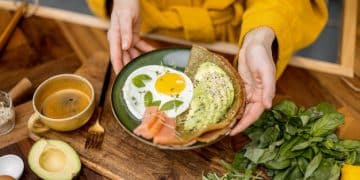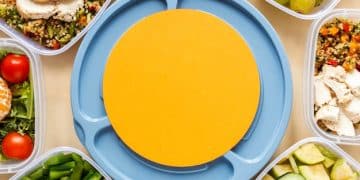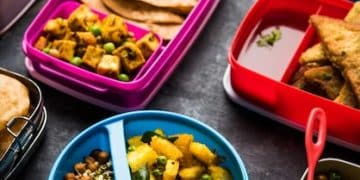Meal Planning for Dietary Restrictions: Gluten-Free, Vegan & Keto Diets
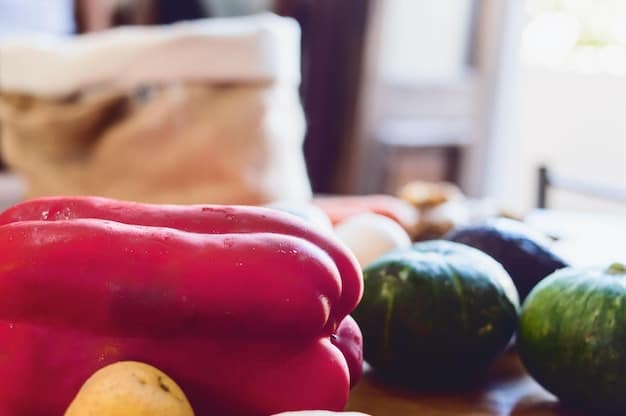
Meal planning for dietary restrictions such as gluten-free, vegan, and keto diets involves tailoring your meals to avoid certain ingredients while ensuring balanced nutrition, often requiring careful selection of recipes and mindful preparation to meet specific dietary needs and health goals.
Navigating dietary restrictions can feel like a culinary maze, but with the right strategies, meal planning for dietary restrictions becomes an empowering tool. Whether you’re embracing a gluten-free lifestyle, adhering to a vegan diet, or exploring the world of keto, thoughtful meal planning can simplify your journey and enhance your well-being.
Understanding Your Dietary Needs
Before diving into meal planning, it’s crucial to understand the specifics of your dietary restriction. This involves knowing which foods to avoid and identifying nutrient-rich alternatives to ensure you’re still meeting your body’s needs.
Gluten-Free Diet Essentials
A gluten-free diet requires eliminating gluten, a protein found in wheat, barley, and rye. This means avoiding many common foods, but also opens the door to a wide range of naturally gluten-free options.
Vegan Diet Basics
Veganism excludes all animal products, including meat, dairy, eggs, and honey. A well-planned vegan diet emphasizes plant-based foods like fruits, vegetables, legumes, nuts, and seeds.
Keto Diet Principles
The ketogenic (keto) diet is a high-fat, very low-carb diet. The goal is to shift the body’s primary energy source from glucose to ketones, produced from fat breakdown. This means drastically reducing carbohydrate intake and increasing fat consumption.
- Read Labels Carefully: Always check ingredient lists to identify hidden sources of gluten, animal products, or carbohydrates.
- Focus on Whole Foods: Prioritize minimally processed foods to maximize nutrient intake and avoid unnecessary additives.
- Consult a Professional: If you have specific health concerns or are unsure how to meet your nutritional needs, consult a registered dietitian or healthcare provider.
Understanding the “why” behind your dietary choices will make meal planning more effective and sustainable. Knowledge is power in navigating dietary restrictions!

Planning Gluten-Free Meals
Planning gluten-free meals requires awareness and creativity. Many staple foods contain gluten, but there are delicious and nutritious alternatives to explore. The key is to focus on naturally gluten-free foods and learn how to adapt your favorite recipes.
Gluten-Free Grains and Starches
Embrace gluten-free grains like quinoa, brown rice, oats (certified gluten-free), and buckwheat. Experiment with gluten-free flours such as almond flour, coconut flour, and tapioca starch for baking.
Adapting Recipes
Many traditional recipes can be adapted to be gluten-free. Replace wheat flour with gluten-free flour blends, and be mindful of other potential sources of gluten, such as soy sauce (use tamari instead) and certain processed foods.
- Batch Cooking: Prepare large batches of gluten-free grains or soups to have on hand for quick meals.
- Gluten-Free Swaps: Learn simple swaps like using lettuce wraps instead of bread for sandwiches.
- Explore Global Cuisine: Many cuisines, such as Thai and Indian, naturally feature gluten-free dishes.
By understanding gluten-free ingredients and adapting recipes, you can enjoy a diverse and satisfying gluten-free diet. Don’t be afraid to experiment and find what works best for you.
Designing Vegan Meal Plans
Crafting vegan meal plans involves ensuring adequate protein, vitamins, and minerals from plant-based sources. It’s about more than just excluding animal products—it’s about embracing a variety of nutrient-rich plant foods.
Plant-Based Protein Sources
Include a variety of plant-based protein sources in your meals, such as tofu, tempeh, lentils, chickpeas, black beans, and quinoa. These foods provide essential amino acids necessary for overall health.
Essential Nutrients for Vegans
Pay attention to nutrients that are sometimes lacking in vegan diets, like vitamin B12, iron, calcium, and omega-3 fatty acids. Consider fortified foods or supplements to meet your needs.
- Meal Prep Protein: Cook a big batch of lentils or tofu on the weekend to add to salads or bowls during the week.
- Snack Smart: Keep nuts, seeds, and fruits on hand for quick and nutritious snacks.
- Get Creative with Veggies: Explore roasting, grilling, or steaming different vegetables to add variety to your meals.
A well-planned vegan diet can be incredibly healthy and delicious, providing all the nutrients you need while supporting ethical and environmental values. Focus on variety and balance to create satisfying meal plans.
Crafting Keto-Friendly Menus
Creating keto-friendly menus requires careful attention to macronutrient ratios, focusing on high-fat, moderate-protein, and very low-carbohydrate foods. It’s about mastering the art of replacing carb-heavy staples with keto-approved alternatives.
Keto-Approved Foods
Prioritize foods like avocados, nuts, seeds, olive oil, coconut oil, fatty fish (salmon, mackerel), and non-starchy vegetables (spinach, kale, broccoli). These foods provide essential fats and nutrients while keeping carbohydrate intake low.
Keto Recipe Swaps
Learn how to adapt your favorite recipes to be keto-friendly. Replace traditional flour with almond or coconut flour, and use cauliflower rice instead of regular rice. Experiment with keto-friendly sweeteners like stevia or erythritol.
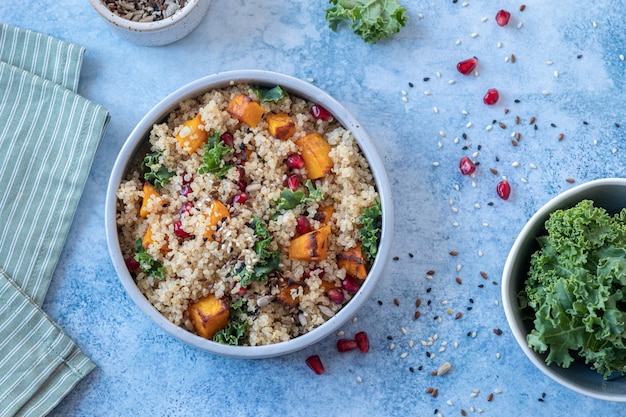
- Plan Ahead: Keto requires careful planning to avoid accidental carb overload. Plan your meals and snacks in advance.
- Track Macros: Use a food tracking app to monitor your macronutrient intake (fat, protein, carbs) and ensure you’re staying within your keto goals.
- Hydrate: Drink plenty of water to support fat metabolism and prevent dehydration, a common side effect of the keto diet.
A well-executed keto diet can be an effective strategy for weight loss and blood sugar control, but it requires commitment and careful planning. Focus on whole, unprocessed foods and track your progress to ensure success.
Simplifying the Meal Planning Process
Meal planning doesn’t have to be complicated. With the right strategies and tools, you can streamline the process and make it a sustainable part of your lifestyle. The key is to find what works best for you and to be flexible.
Utilizing Technology
There are numerous apps and websites designed to help with meal planning, offering features like recipe databases, grocery lists, and macronutrient tracking. Explore these tools to find one that fits your needs.
Theme Nights
Create theme nights to simplify meal selection. For example, “Meatless Monday” or “Taco Tuesday” can provide inspiration and reduce decision fatigue.
- Start Small: Begin by planning just a few meals per week and gradually increase as you become more comfortable.
- Involve Others: If you live with family or roommates, involve them in the meal planning process to ensure everyone’s needs and preferences are considered.
- Be Flexible: Life happens. Don’t be afraid to adjust your meal plan as needed and allow for occasional deviations.
By utilizing technology, creating theme nights, and starting small, you can simplify the meal planning process and make it a sustainable part of your routine. Remember, the goal is to make healthy eating easier and more enjoyable.
Overcoming Common Meal Planning Challenges
Even with the best intentions, meal planning can sometimes be challenging. Unexpected events, cravings, and lack of time can all derail your efforts. The key is to anticipate these challenges and develop strategies to overcome them.
Time Constraints
If time is a major constraint, focus on quick and easy recipes that can be prepared in 30 minutes or less. Utilize pre-cut vegetables and other convenience items to save time.
Cravings
Cravings are a normal part of the dietary journey. Instead of completely restricting yourself, plan for occasional treats in moderation. Or, find healthy alternatives that satisfy your cravings without derailing your diet.
- Plan for Leftovers: Intentionally cook extra food to have leftovers for lunch or dinner the next day.
- Prep Ingredients in Advance: Chop vegetables, measure spices, and marinate proteins ahead of time to streamline the cooking process.
- Keep Emergency Meals on Hand: Stock your pantry with healthy, shelf-stable options for those days when you don’t have time to cook.
By anticipating challenges and developing strategies to overcome them, you can stay on track with your meal planning goals, even when life gets busy or unpredictable. Remember, consistency is key.
| Key Aspect | Brief Description |
|---|---|
| 🍎 Dietary Understanding | Know your specific dietary needs (gluten-free, vegan, keto). |
| 🌱 Ingredient Swaps | Learn suitable substitutions for restricted ingredients. |
| 🗓️ Advance Planning | Plan meals ahead to stay on track and avoid impulse decisions. |
| ⏰ Time Management | Utilize strategies to save time, like batch cooking and prepping. |
Frequently Asked Questions (FAQ)
▼
Common mistakes include not reading labels carefully and failing to replace lost nutrients, leading to imbalances in the diet.
▼
Vegans can ensure adequate protein intake by including varied sources like legumes, tofu, tempeh, nuts, and seeds in their daily meals.
▼
Risks include nutrient deficiencies, constipation due to low fiber intake, and the “keto flu,” characterized by fatigue and headaches.
▼
Yes, most family recipes can be adapted! Experiment with ingredient substitutions to suit your dietary needs while retaining the flavor.
▼
Planning can be done weekly, bi-weekly, or monthly, based on your convenience and lifestyle. Consistency is key to adhering to your dietary requirements.
Conclusion
Mastering meal planning for dietary restrictions requires commitment, knowledge, and creativity. By understanding your dietary needs, utilizing available resources, and developing effective strategies, you can enjoy delicious and nutritious meals that support your health and well-being, regardless of your dietary choices.
